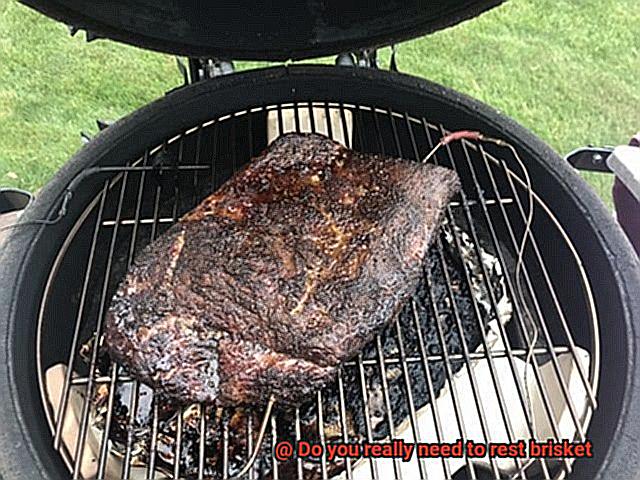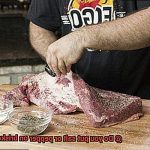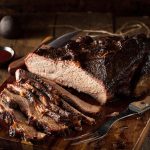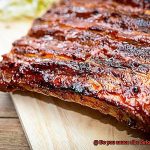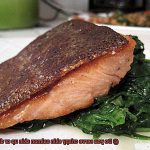Imagine sinking your teeth into a slice of brisket so tender it practically dissolves on your tongue. Juices bursting with savory goodness, flavors that make your taste buds dance with joy. As a die-hard meat lover, there’s nothing quite like the perfect brisket. But here’s the thing: there’s a secret step that can take your brisket from good to mind-blowingly amazing. It’s all about the rest.
In this blog post, we’re diving headfirst into the age-old debate: Do you really need to rest brisket? Prepare to have your BBQ game transformed as we uncover why this practice is crucial and the jaw-dropping benefits it brings to this revered cut of meat.
Get ready for a whole new level of brisket brilliance as we reveal the hidden power of resting.
Contents
What is Resting Brisket?
Enter the often-overlooked but essential step of resting brisket. Today, we unravel the mysteries of this technique and explore its transformative effects on your grilled masterpiece.
Resting Brisket: Unlocking Tender Perfection
When a brisket is cooked, the proteins in the meat tighten, causing the juices to be pushed towards the center. Resting brisket allows these proteins to relax and the juices to redistribute, resulting in a moist and succulent final product. Think of it as a well-deserved break for your brisket, allowing it to reach tender perfection.
Timing is Key:
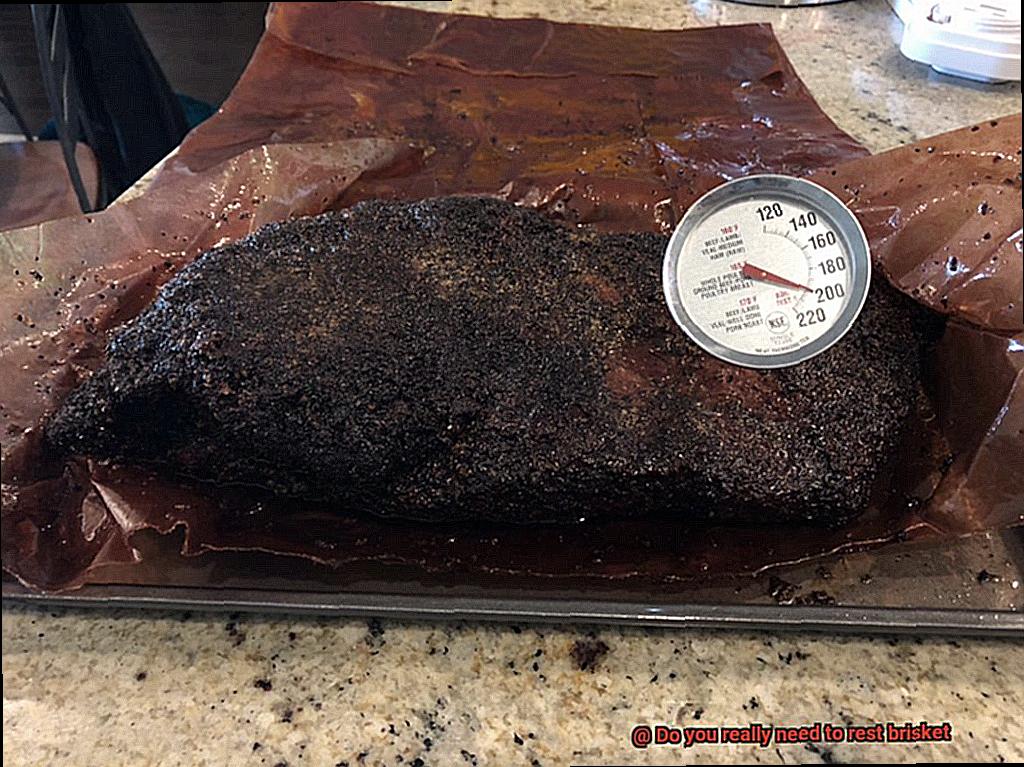
The optimal resting time for brisket can vary depending on its size and thickness. While 30 minutes to an hour is a good starting point, some pitmasters and chefs prefer longer resting periods of up to two hours or more. This extra patience pays off as it maximizes moisture retention and tenderness, ensuring a melt-in-your-mouth experience.
Flavor Fusion:
Resting brisket not only enhances tenderness but also intensifies the flavors. As the juices redistribute, they carry with them the essence of any rubs or marinades used during cooking. This results in a symphony of taste throughout every bite, taking your grilling experience to new heights. Imagine a harmonious explosion of smoky, savory, and aromatic flavors dancing on your palate.
The Art of Resting:
Resting brisket does not mean leaving it out at room temperature. After removing it from the heat source, loosely tent it with foil or place it in an insulated container to retain warmth. This prevents any significant temperature drop during the resting period, ensuring optimal results. Treat your brisket with care and attention to detail.
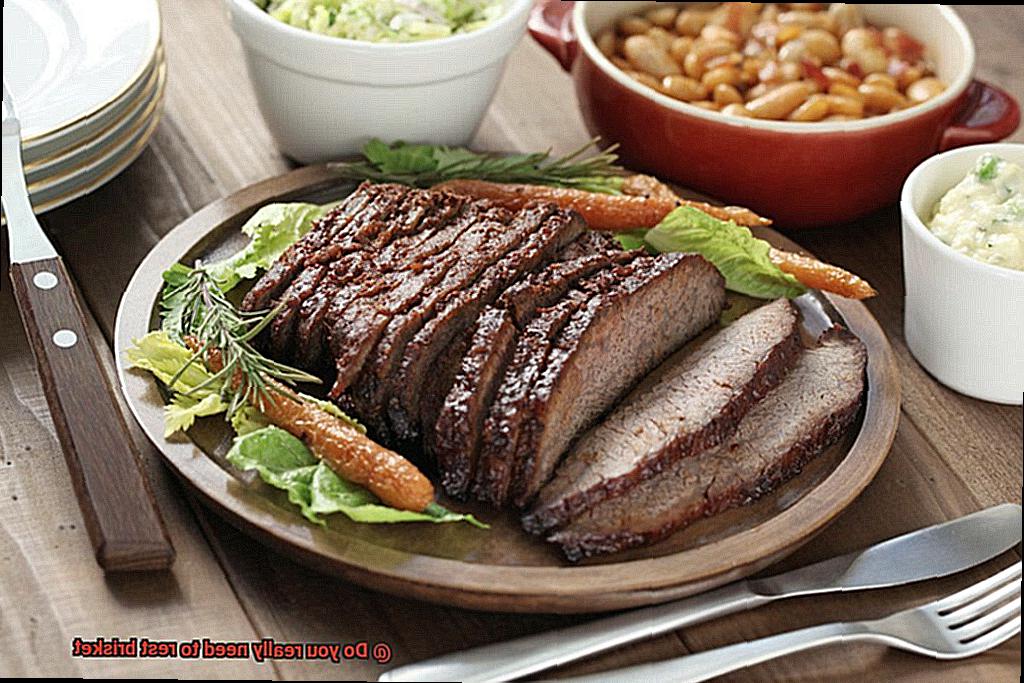
Debunking Myths:
While some debate the necessity of resting brisket, its benefits are undeniable. Resting helps relax muscle fibers, retaining moisture, and enhancing texture. The slight cooling down during resting also facilitates easier slicing without compromising juiciness. It’s not just a myth; it’s science-backed technique that yields exceptional results.
Personal Preference:
Experimentation is key when it comes to resting brisket. Some prefer shorter rests, while others swear by extended periods. Ultimately, finding the balance that suits your taste and yields the best results is an exciting journey worth embarking on. Discover your own personal resting brisket technique and make it a signature move in your grilling repertoire.
Benefits of Resting Brisket
Resting brisket is not just a step, but a crucial one, in the journey to achieving the ultimate grilling masterpiece. After hours of lovingly tending to your brisket on the grill, the tantalizing aroma has everyone eagerly awaiting their first bite. But hold on, before you start slicing into that meaty goodness, there’s one important thing you must do – let it rest. And trust me, this period of patience will be well worth it when you sink your teeth into a tender, juicy, and flavor-packed slice of brisket.
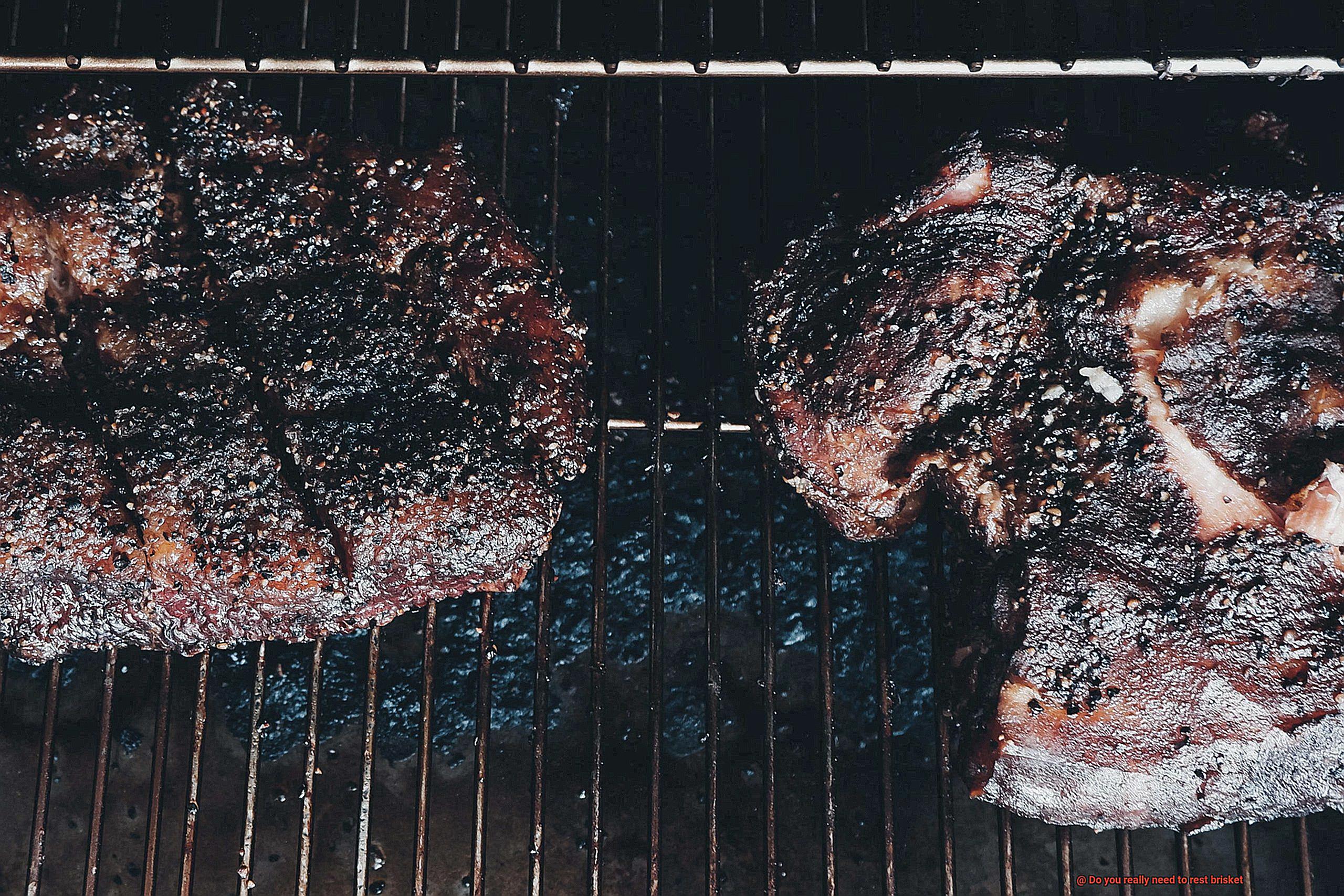
Let’s dive into the science behind why resting brisket is so important. When you cook brisket, the heat causes the proteins in the meat to tighten and contract. This process forces the juices towards the center of the brisket, leaving the outer layer drier than we’d like. But fear not. Resting allows these precious juices to redistribute evenly throughout the meat, resulting in a moist and succulent texture that will make your taste buds sing.
But that’s not all – resting also gives the fat in the brisket some time to solidify slightly. This slight firming up makes it easier to slice without losing too much moisture. So each slice you carve will be as luscious as the last.
And let’s not forget about those scrumptious rubs and seasonings you’ve meticulously applied. Resting allows them to fully penetrate and meld with the meat, infusing every bite with intense flavor. So not only will your brisket be tender and juicy, but it will also burst with mouthwatering taste.
Now, let’s talk aesthetics. Resting helps preserve that coveted pink smoke ring that grilling enthusiasts adore. By allowing the meat to retain its moisture during slicing, you’ll maintain that beautiful smoke ring and impress your guests with your skills.
Practically speaking, resting also makes it easier to handle and slice the brisket. It firms up slightly during this time, giving you more control over your knife and ensuring clean, even cuts. No more struggling with a wobbly piece of meat.
And here’s a bonus benefit – resting can help with timing. While your brisket is resting, you can use that time to coordinate other dishes or sides to be ready at the same time. No more cold mashed potatoes or wilted greens. Resting gives you the flexibility to serve up a perfectly synchronized meal.
Disadvantages of Not Resting Brisket
Calling all grill masters. Prepare to embark on a journey into the realm of brisket and unlock the secrets to achieving perfection. If you’ve ever rushed through the cooking process and neglected to rest your brisket, you may have inadvertently sabotaged your culinary masterpiece. This article delves into the disadvantages of not resting brisket, from a loss of succulence to a lackluster dining experience. So, grab your apron and let’s dive in.
Loss of Juiciness:
Imagine sinking your teeth into a flawlessly cooked slice of brisket, only for it to be disappointingly dry. By skipping the resting phase, you deny the meat the opportunity to reabsorb its own flavorful juices. Consequently, those precious juices escape upon slicing, leaving you with a parched texture and an underwhelming feast.
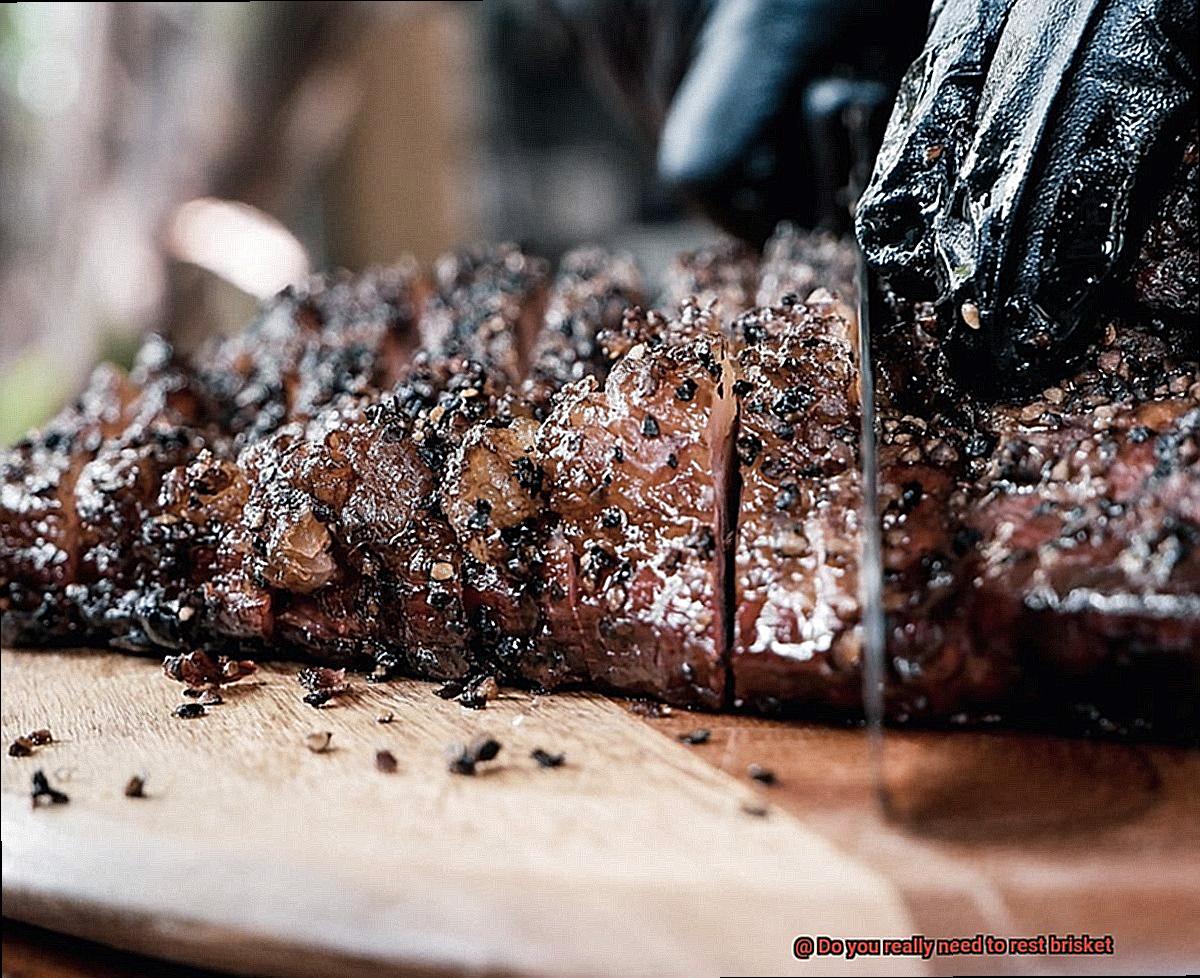
Uneven Temperature Distribution:
Brisket, being a thick cut of meat, tends to cook unevenly, with the outer layers becoming hotter than the interior. Resting allows the heat to disperse more evenly throughout the brisket, ensuring consistent texture and doneness. Without this crucial step, you risk serving a brisket that is overcooked on the outside yet underdone on the inside – hardly the mouthwatering delight you envisioned for your guests.
Soggy Bark:
The bark – that delectable crust that forms on the exterior of the brisket during cooking. Resting is essential for preserving its tantalizing texture because it allows any residual moisture on the surface to evaporate. Without proper rest, your bark could become disappointingly soggy, stripping away its delightful crunch and smoky flavor.
Difficult Slicing:
Picture this: after devoting hours to preparing and grilling your brisket, it’s finally time to carve and serve. Yet, without adequate resting, the meat remains tense and unyielding. Consequently, you find yourself wrestling with tough fibers, resulting in messy, ragged slices. Resting allows the meat fibers to relax, resulting in cleaner and more elegant cuts.
Less Enjoyable Eating Experience:
Ultimately, grilling is an endeavor aimed at creating a tantalizing culinary experience that sets taste buds ablaze. By forgoing the resting phase, you deprive the flavors in the brisket of the chance to fully develop and meld together. Resting allows the meat to reach its pinnacle of deliciousness, resulting in a more gratifying and scrumptious dining experience.
Duration of the Rest
Today, we dive deep into the sizzling world of brisket to uncover the mysteries of the rest period. Picture this: your mouthwatering brisket, tantalizingly tempting you from across the grill. But wait. Is it worth the wait? Brace yourself, my friend, because the answer might just surprise you.
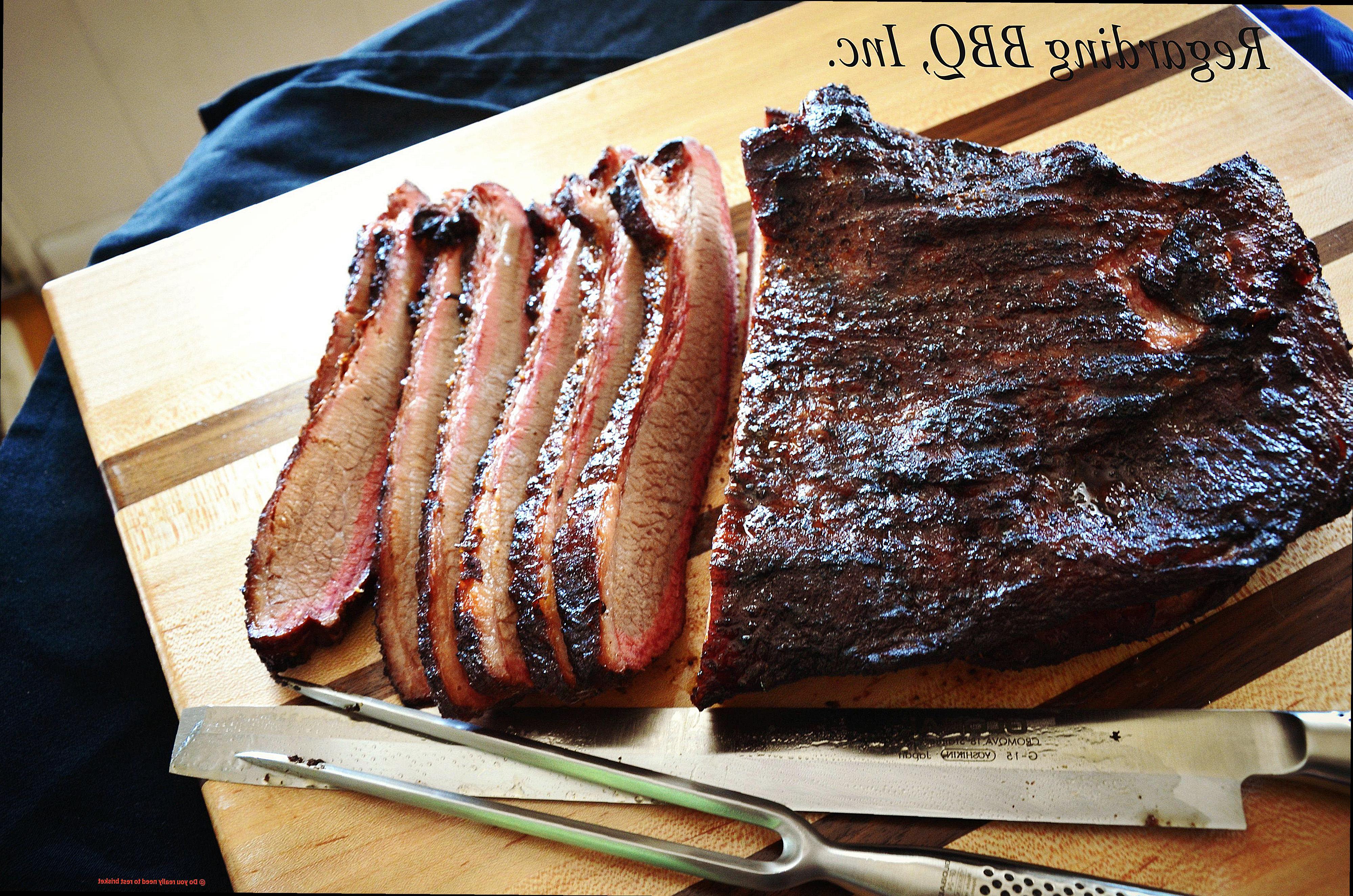
Let’s break it down like a pro pitmaster. Resting your brisket after cooking is like hitting the pause button before diving headfirst into a flavor explosion. It’s a crucial step that allows the meat to relax and reabsorb its juices, resulting in a tender and moist bite that will leave you craving more.
Now, experts are no strangers to this debate, and they’ve got some serious beef. They unanimously agree that a minimum rest period of one hour is essential. This gives those succulent juices enough time to redistribute throughout the meat, ensuring that every mouthful bursts with an explosion of flavors that will make your taste buds dance with delight. But hold onto your tongs because it doesn’t end there.
Some pitmasters take it to a whole new level, recommending longer rests of two to four hours or even overnight. Now that’s what I call dedication. These extended rest periods give your brisket ample time to reach the pinnacle of tenderness and magnify its mouthwatering flavors tenfold. The result? A barbecue masterpiece that will have everyone begging for seconds.
But here’s where it gets juicy – the duration of the rest depends on several factors. If you’re dealing with a behemoth hunk of brisket, a longer rest is in order to ensure those savory juices are evenly distributed from edge to edge. And if you’ve been slow-cooking or smoking your brisket with intense heat, a longer rest can help those muscle fibers unwind and relax after their fiery ordeal.
But hey, not everyone is on board with the resting train. Some renegade chefs argue that if you’ve nailed the cooking techniques and temperatures just right, a long rest might not be necessary. They believe that a shorter rest of 15-30 minutes can still work wonders for the texture and flavor, giving you a mouthwatering result without the wait.
So, what’s the final verdict? Well, my hungry comrades, it all comes down to personal preference and a dash of experimentation. Consider factors like the size of your brisket, the cooking method you’ve employed, and the taste sensation you desire. Give different rest durations a whirl and let your taste buds be the ultimate judge.
Tips for Resting Brisket
Imagine sinking your teeth into a juicy and tender slice of brisket, bursting with flavor. How do you achieve this mouthwatering result? One crucial step is resting your brisket after cooking. In this article, we’ll explore the importance of resting brisket and provide you with tips to do it properly. So grab your apron and let’s get started.
Why Resting Brisket Matters:
Resting brisket allows the meat to relax and reabsorb its flavorful juices, resulting in a more tender and delicious end product. It’s like giving the brisket a well-deserved break after all that time on the grill or smoker.
When you cook brisket, the heat causes the muscle fibers to contract, forcing out moisture and making the meat tough. Resting helps reverse this process by allowing the fibers to relax and reabsorb the flavorful juices. This results in a more tender and succulent brisket that melts in your mouth.
Timing Is Everything:
Plan ahead and make sure you have enough time to let your brisket rest for at least 30 minutes to an hour. Some experts recommend even longer resting times, up to 2 hours, for maximum flavor infusion.
During this resting period, the brisket continues to cook through carryover cooking, where the internal temperature rises a few degrees even after being removed from the heat source. By taking the brisket off when it’s a few degrees below your desired final temperature, you can avoid overcooking.
Keep It Warm:
To prevent your brisket from cooling down too much during the resting period, wrap it in foil or butcher paper and place it in a cooler or insulated container. This will help retain its heat while it relaxes.
Keeping the brisket warm is essential because if it cools too quickly, the collagen in the meat can tighten, resulting in a tougher texture. By wrapping it tightly and insulating it, you create a cozy environment for the brisket to rest and retain its heat.
Slicing Made Easy:
Resting brisket allows the juices to redistribute throughout the meat, making it easier to slice. When you cut into a hot brisket right off the grill, precious juices tend to run out, leaving you with drier slices. Give it time to rest, and you’ll be rewarded with moist and succulent slices.
When slicing your rested brisket, remember to cut against the grain. This means cutting across the muscle fibers rather than parallel to them. This technique ensures that each slice is tender and easy to chew, as it shortens the long muscle fibers that can be tough when left intact.
Different Methods for Resting Brisket
Resting brisket is a crucial step in the cooking process that allows the meat to retain its juices and become more tender and flavorful. There are several different methods for resting brisket, each with its own advantages and disadvantages. Let’s explore these methods in detail:
The Texas Crutch Method:
One popular method is the “Texas crutch.” This technique involves tightly wrapping the brisket in either butcher paper or aluminum foil and placing it in a cooler or insulated container to rest for several hours. The advantage of this method is that it helps to retain heat and moisture, resulting in a more tender brisket. However, one downside is that it can soften the bark on the outside of the meat, which some grill enthusiasts may not prefer.
The Open-Air Rest:
Another option is the “open-air rest.” With this method, you simply remove the brisket from the grill or smoker and allow it to rest on a cutting board or platter for a period of time. This allows for better air circulation around the meat and can help maintain a crispy bark. However, some find that the meat may be slightly less tender compared to the Texas crutch method.
A Combination Approach:
If you can’t decide between the two methods, why not try a combination approach? Start by wrapping the brisket in foil or butcher paper for a few hours to retain heat and moisture. Then, unwrap it and let it rest in open air for a period of time to allow the bark to crisp up. This way, you get the best of both worlds.
Now, how long should you rest your brisket? Well, that depends on factors like size, cooking temperature, and personal preference. Generally, it’s recommended to rest for at least 30 minutes to an hour. However, some experts suggest resting for up to four hours for optimal results. Just be aware that during the resting period, the internal temperature of the brisket will continue to rise a few degrees due to carryover cooking. So, remove it from heat when it reaches an internal temperature slightly lower than your desired doneness.
Regardless of the method you choose, handle the brisket with care during this time to avoid any loss of juices. Place it on a clean cutting board or platter and tent it loosely with foil to retain heat while allowing excess steam to escape.
In the end, the choice of resting method comes down to personal preference and desired outcomes. If you prefer a softer, more tender brisket, the Texas crutch method may be your best bet. On the other hand, if you prioritize a crispy bark and slightly firmer texture, opt for an open-air rest. And if you can’t decide, give the combination approach a try.
The Role of Temperature in Resting Brisket
You’ve spent hours smoking your brisket to perfection, and now it’s time to let it rest. But did you know that the temperature at which you rest your brisket can have a significant impact on the final result? That’s right, temperature plays a crucial role in the resting process, determining how the meat continues to cook and retain its moisture.
When your brisket reaches its desired internal temperature (typically around 195-205°F), it’s time to take it off the heat and let it rest. This resting period allows the meat to redistribute its juices, resulting in a more tender and flavorful end product. But what does temperature have to do with it?
During the resting period, the residual heat continues to cook the brisket slightly. This additional cooking time helps break down connective tissues, making the meat even more tender. The temperature at which you choose to rest your brisket can impact how much additional cooking occurs during this resting period.
Some pitmasters prefer to rest their brisket at a lower temperature (around 150-160°F) to slow down the cooking process and maintain the tenderness they desire. This lower resting temperature allows for minimal additional cooking while still giving the meat time to relax and reabsorb its juices.
On the other hand, some pitmasters opt for a higher resting temperature (around 180-190°F) for a slightly firmer texture. Resting at a higher temperature can help ensure that the meat retains its juiciness without becoming overly tender.
But resting brisket doesn’t mean leaving it in an uncontrolled environment. To maintain the desired temperature during the resting period, it’s best to tightly wrap your brisket in foil or butcher paper and place it in a preheated cooler or insulated container.
Aside from enhancing tenderness, resting brisket also allows the flavors to develop and intensify. As the meat cools down, the juices are reabsorbed, resulting in a more flavorful and moist final product.
The length of the resting period can vary depending on factors such as the size of the brisket, cooking method used, and personal preference. However, most experts recommend resting brisket for at least 30 minutes to allow for optimal results.
It’s worth mentioning that not all cuts of meat require resting, but brisket, with its high collagen content, benefits greatly from this step. Resting allows the collagen to convert into gelatin, resulting in a more tender and flavorful meat.
Common Mistakes to Avoid When Resting Brisket
Resting brisket is a crucial step in achieving the perfect barbecue experience. To ensure your brisket is tender, juicy, and packed with flavor, it’s important to avoid common mistakes that can compromise its quality during the resting stage. In this comprehensive guide, we will explore the dos and don’ts of resting brisket, helping you avoid pitfalls and achieve barbecue perfection every time.
Mistake #1: Insufficient Resting Time
One of the most common mistakes is not allowing enough resting time for the meat to reabsorb its juices and relax. Aim to rest the brisket for at least 30 minutes to an hour, depending on its size. Rushing this step can result in a drier, less flavorful final product.
Mistake #2: Improper Wrapping Technique
Properly wrapping the brisket during resting is vital for retaining heat and moisture. Use either foil or butcher paper to tightly wrap the brisket, creating a cozy environment that helps tenderize the meat and prevent moisture loss. Leaving the brisket unwrapped can result in excessive drying and a tougher texture.
Mistake #3: Placing in a Cold Environment Too Soon
Maintaining the brisket’s temperature during resting is essential for keeping it tender and moist. Instead of placing it directly into a cold environment like a refrigerator, consider using a warm cooler or wrapping it in towels. Rapid cooling can lead to moisture loss and reduced tenderness.
Mistake #4: Slicing Too Soon After Resting
Patience is key when it comes to slicing rested brisket. Allow the meat to rest for at least 10-15 minutes after removing it from its resting place before slicing. This allows the juices to settle back into the meat, ensuring a succulent, juicy bite. Slicing too soon can cause the brisket to lose its juiciness and become dry.
Mistake #5: Improper Storage of Leftovers
Proper storage is crucial if you’re fortunate enough to have leftovers. Wrap the leftover brisket tightly in foil or place it in an airtight container, then refrigerate promptly. This prevents bacterial growth and helps preserve the flavor and texture of the brisket for future enjoyment.
pJHGRA0sW9A” >
Conclusion
Resting brisket after cooking is not just a suggestion, it’s a necessity.
This crucial step allows the meat to relax and reabsorb its juices, resulting in a tender and flavorful final product. Don’t rush this process – let the brisket rest for at least 30 minutes before slicing into it.
So, next time you’re tempted to skip the rest period, resist the urge and give your brisket the time it deserves.

